Key Takeaways
A well-planned travel app tech stack is the backbone of a reliable, scalable, and high-performing travel application.
Understanding the key components–frontend, backend, databases, APIs, and cloud hosting–ensures smooth app functionality and user experience.
Choosing the right backend technologies for travel apps influences performance, security, and the ability to integrate advanced features like AI and ML.
Factors like app type, scalability, security, and third-party integrations must guide the selection of a suitable tech stack.
A thoughtful travel app tech stack guide helps developers build apps that are future-ready and adaptable to emerging travel trends.
Partnering with experienced teams, like JPLoft, ensures your travel app is developed with the right tech stack, security standards, and performance optimization for long-term success.
In today’s digital-first travel industry, apps have become the heartbeat of seamless trip planning from booking flights to finding local experiences.
Behind every smooth user journey lies a well-structured Travel app tech stack, which powers the app’s performance, scalability, and real-time responsiveness.
Many travel startups and enterprises underestimate the importance of choosing the right technologies, often resulting in poor app stability or limited growth.
This comprehensive blog will walk you through everything you need to know about building a reliable backend for travel apps.
From understanding key components to selecting the right technologies, consider this your complete travel app tech stack guide to creating a powerful, future-ready travel app.
What is a Travel App Tech Stack?
When building a travel app, your travel app tech stack is essentially the foundation that brings your idea to life. It’s the combination of programming languages, frameworks, tools, and platforms used to develop both the front-end (user interface) and back-end (server-side logic) of your application.
Think of it as the engine and dashboard of your travel platform: one powers functionality, the other ensures a smooth, engaging user experience.
A well-chosen mobile app tech stack allows developers to integrate advanced features such as real-time flight updates, hotel availability, or personalized itinerary suggestions with minimal lag.
This combination of technologies defines how well your app performs under heavy traffic and how easily it scales as your user base grows.
If you’re planning to get into this industry, understanding these technological layers is crucial because each component directly impacts performance, scalability, and development expenses.
In simple terms, a guide to travel app tech stack helps you identify what tools and systems are needed to create a responsive, reliable, and feature-rich digital travel solution. From database management systems to APIs and cloud platforms, every layer of the stack contributes to your app’s performance and flexibility.
Choosing the right mix depends on your project’s complexity and long-term goals. For instance, if you’re exploring how to create a travel app that delivers personalized recommendations, supports multilingual users, and handles peak-season traffic effortlessly, your stack selection becomes a strategic foundation rather than a mere technical setup.
In short, the travel app tech stack serves as the backbone of your app’s success. It not only determines what’s possible today but also how efficiently your platform can evolve with future technologies.
Key Components of a Tech Stack
Building a successful travel app requires a clear understanding of its travel app tech stack guide and the essential components that make it function seamlessly. Each layer of the tech stack plays a specific role in ensuring performance, scalability, and user satisfaction.
Here are the key components:
1. Frontend (Client-Side Layer)
The frontend is the part of the app that users interact with directly. It includes the design, navigation, and overall user experience. Popular frontend technologies for travel apps include React Native, Flutter, and Swift for iOS or Kotlin for Android.
A polished frontend ensures that features like flight search, hotel booking, or itinerary management feel intuitive. Integrating AR in travel apps for immersive experiences like virtual tours is increasingly common at this layer.
2. Backend (Server-Side Layer)
The backend for travel apps powers the app’s logic, database management, and server communications. This is where all the critical operations happen, handling bookings, user authentication, payment processing, and notifications.
Using the right backend technologies for travel apps like Node.js, Django (Python), or Spring Boot (Java) ensures high performance and scalability. Developers often plan backend structure carefully when estimating the cost to create a travel app, as complex features require robust server capabilities.
3. Database Management
Travel apps rely heavily on storing and retrieving data efficiently. Databases like MySQL, PostgreSQL, or MongoDB manage user data, bookings, reviews, and more.
The database architecture directly influences how quickly the app responds to searches or loads user itineraries, making it a critical part of the travel app backend architecture.
4. APIs and Third-Party Integrations
APIs connect your app to external services such as flight aggregators, hotel databases, and payment gateways. Integrating APIs allows real-time updates and personalized recommendations.
For example, incorporating booking APIs or hotel search APIs can significantly enhance user experience, which is why many developers consider the top travel app features at this stage.
5. Cloud Hosting and DevOps Tools
Hosting on cloud platforms like AWS, Google Cloud, or Azure ensures your app scales efficiently and handles peak traffic without downtime. DevOps tools such as Docker, Kubernetes, and CI/CD pipelines streamline deployment and maintenance.
When planning an app similar to Hopper, these components are crucial for ensuring speed and reliability.
6. Security and Compliance Layer
Travel apps deal with sensitive user data, including personal identification and payment details. Implementing robust security practices, such as encryption, secure APIs, and GDPR compliance, is essential. Security measures should be integrated throughout the stack from backend to database and API layers.
7. Mobile Optimization & Performance Tools
Tools like Firebase, Crashlytics, and performance monitoring suites help maintain app responsiveness and stability. Optimizing both frontend and backend ensures users can book flights or access itineraries without delays, forming the backbone of a strong travel mobile app tech stack.
Importance of a Suitable Travel App Tech Stack
Selecting the right travel app tech stack is more than a technical decision; it directly impacts your app’s performance, user experience, and long-term success. Here’s why a suitable tech stack matters:
► Enhanced Performance and Speed
A carefully chosen stack ensures fast response times and smooth interactions, even under heavy traffic. The backend for travel apps plays a crucial role in managing bookings, queries, and real-time data efficiently. Slow or inefficient stacks can frustrate users and lead to high abandonment rates.
► Scalability for Growth
As your app attracts more users, a robust tech stack allows it to scale seamlessly.
Cloud integration and modular backend frameworks for travel apps make it easier to add new features or expand services, supporting future growth without major overhauls.
Many travel app development challenges arise when apps are built on rigid or outdated stacks.
► Security and Data Protection
Travel apps handle sensitive personal and payment data. A suitable travel app tech stack guide ensures that encryption, secure APIs, and compliance measures are integrated across all layers, minimizing risks of data breaches and ensuring app security.
► Cost Efficiency in Maintenance and Upgrades
Choosing a flexible and well-supported stack reduces long-term maintenance costs. Developers can implement updates and new features without extensive rework, helping businesses stay competitive while controlling expenses.
► Integration of Advanced Technologies
Modern travel apps increasingly rely on AI and ML to offer personalized recommendations, predictive analytics, or smart itinerary planning. While these capabilities are powered by separate AI/ML model and API layers rather than the core backend framework, a strong travel app tech stack must support their integration. This enables advanced features like chatbots, predictive search, and automated booking assistance within hospitality and travel services.
► Competitive Advantage
Apps built on a strategic travel app tech stack guide can deliver faster, safer, and more engaging experiences. They are better positioned to adopt emerging trends, monetize effectively, and become market leaders among the best travel apps in their niche.
What to Include in a Travel App Tech Stack?
A well-rounded travel app tech stack requires a combination of multiple technologies and tools that work together seamlessly.
Take a look at this table to know what to include in a travel app tech stack:
|
Category |
Purpose / Description |
Examples / Tools |
|
Frontend Technologies |
Handles user interaction and experience; ensures smooth navigation and rich UI/UX |
React Native, Flutter, Swift, Kotlin |
|
Backend Frameworks and Languages |
Manages core app logic, database operations, server communication; enables bookings, notifications, authentication, and real-time updates |
Node.js, Django, Spring Boot, Ruby on Rails |
|
Database Systems |
Stores and retrieves user data, bookings, reviews, and preferences efficiently; ensures scalability and smooth performance |
MySQL, PostgreSQL, MongoDB |
|
APIs and Third-Party Integrations |
Connects app to external services (flights, hotels, payments); ensures real-time updates and seamless functionality |
Flight aggregators, hotel platforms, payment gateways |
|
Security and Compliance Tools |
Protects sensitive user data; ensures secure authentication, encryption, and adherence to data regulations |
SSL/TLS encryption, OAuth 2.0, GDPR/PCI DSS compliance tools |
|
Cloud Hosting and DevOps Tools |
Provides scalability, high availability, low latency; supports faster deployment and easier maintenance |
AWS, Google Cloud, Azure, Docker, Kubernetes, CI/CD pipelines |
|
Performance Monitoring and Analytics |
Monitors app health and user engagement; enables data-driven decisions and real-time improvements |
Firebase, Crashlytics, analytics dashboards |
|
Advanced Technologies |
Enhances personalization, security, and operational efficiency; differentiates the app in a competitive market |
AI/ML frameworks (TensorFlow, PyTorch), Blockchain, predictive booking algorithms, decentralized travel records |
Here’s a detailed look at what should be included:
1] Frontend Technologies
The frontend is responsible for user interaction and experience. Technologies like React Native, Flutter, Swift, and Kotlin are commonly used. These frameworks ensure smooth navigation, responsive interfaces, and rich UI/UX, which is critical when considering how to create an app like Omio.
2] Backend Frameworks and Languages
The backend handles the app’s core logic, database management, and server communication. Popular backend frameworks for travel apps include Node.js, Django, Spring Boot, and Ruby on Rails. A robust backend allows your app to manage bookings, authentication, notifications, and real-time updates efficiently.
3] Database Systems
Data is at the heart of every travel app. Using relational databases like MySQL, PostgreSQL, or NoSQL databases like MongoDB ensures that user data, bookings, reviews, and preferences are stored and retrieved quickly. Proper travel app backend architecture ensures scalability and smooth performance.
4] APIs and Third-Party Integrations
APIs connect your app with external services such as flight aggregators, hotel platforms, and payment gateways. Seamless integration ensures real-time updates and a richer user experience. Strong API architecture also plays a key role in preventing the common issues discussed in why online travel apps fail, helping your product stay reliable and scalable.
5] Security and Compliance Tools
Security is non-negotiable in travel apps due to sensitive user data. Tools for encryption, secure authentication, and GDPR compliance form a crucial part of travel app security. A well-implemented security stack not only protects data but also builds lasting user trust.
6] Cloud Hosting and DevOps Tools
Cloud platforms like AWS, Google Cloud, and Azure provide scalability, high availability, and low latency. DevOps tools such as Docker, Kubernetes, and CI/CD pipelines ensure faster deployment, efficient updates, and easier maintenance.
7] Performance Monitoring and Analytics
Tools like Firebase, Crashlytics, and analytics dashboards help monitor app health and user engagement. Integrating analytics enables data-driven decisions and improvements in real-time.
8] Advanced Technologies
Emerging technologies like AI, ML, and Blockchain are transforming travel apps by enhancing personalization, security, and operational efficiency.
As seen in successful models, features such as predictive booking algorithms and decentralized travel records can help your app stand out in a competitive market, especially when leveraging AI app development services to optimize user experience and drive innovation.
Factors Influencing the Selection of Travel App Tech Stack
Choosing the right travel app tech stack depends on several critical factors that impact app performance, scalability, and long-term success. Let’s break down the most important considerations:
A] Type and Complexity of the Travel App
The structure and purpose of your app determine the required tech stack. For instance, flight booking apps demand real-time synchronization, while itinerary apps emphasize data storage and personalization.
Understanding your app’s core purpose, whether you are looking for how to design a travel app or create a multi-service booking platform, helps define both frontend and backend needs precisely.
B] Integration of AI and Emerging Technologies
Modern travel apps thrive on personalization and automation powered by AI and ML, supported by reliable data pipelines and cloud APIs that make real-time recommendations possible.
These technologies enhance user recommendations, optimize routes, and predict user preferences. Understanding how to develop an AI travel app can help you choose the right frameworks and tools aligned with your project goals, enabling smarter and more adaptive functionalities.
C] Scalability and Performance Requirements
A scalable backend ensures your app can handle a growing user base without performance drops. Using microservices architecture, load balancers, and CDNs (Content Delivery Networks) keeps systems responsive during high traffic and improves global performance through edge caching. Developers often focus on modular, flexible backends that allow new feature integration without disrupting the app’s workflow.
D] API and Third-Party Integration Compatibility
Your chosen tech stack should easily support external APIs for flights, hotels, and navigation. Compatibility with multiple platforms and payment systems enhances functionality and global reach. Developers can integrate secure APIs and optimize connectivity for faster data processing.
E] Security, Testing, and Maintenance
Prioritizing security and rigorous testing ensures reliability. Incorporating DevOps tools, CI/CD pipelines, and analytics platforms helps detect and resolve bugs faster. Regular audits aligned with best practices in travel app testing keep the system stable, safeguard user data, and maintain consistent app performance.
How to Select the Right Tech Stack for Your Travel App?
Selecting the right tech stack for a travel app is a crucial step that defines your app’s scalability, performance, and overall success. The decision involves a balance between technology capabilities, project goals, and user expectations. Below is a structured approach to help you make the right choice:
Step 1: Define the Core Functionality and App Type
Before choosing any framework or programming language, identify what your app will primarily do: bookings, navigation, itinerary planning, or recommendations.
Understanding this purpose early helps narrow down the right backend, frontend, and database technologies. For projects focused on itinerary intelligence or personalized scheduling, knowing how to build an AI trip planner app guides decisions around advanced AI integration and robust APIs for location and data management.
Step 2: Consider the Target Platform and Devices
Are you developing for Android, iOS, or both? The platform determines your choice of programming languages (Swift, Kotlin, Flutter, or React Native) and affects your backend architecture.
Cross-platform mobile frameworks like Flutter or React Native ensure wide reach, while backends like Node.js or Django manage API communication. Learning from examples of how to create a flight booking app highlights the importance of compatibility and seamless data synchronization across devices, ensuring a better user experience.
Step 3: Evaluate Backend Scalability and Architecture
A scalable backend allows your travel app to handle a surge in traffic during peak travel seasons. Consider using microservices, load balancing, and cloud platforms like AWS or Google Cloud to manage increased user requests effectively
For apps that depend on real-time suggestions and multiple API integrations, a modular travel app backend architecture ensures agility and reduces system downtime. In solutions similar to how to build an AI itinerary app, developers often rely on containerization (Docker, Kubernetes) for better control over server environments.
Step 4: Prioritize Data Security and Compliance
Travel apps store sensitive information such as personal details, payment credentials, and booking histories. Hence, the backend technologies for travel apps you choose must comply with data protection standards like GDPR or PCI DSS.
Incorporate encryption methods (SSL/TLS), authentication protocols (OAuth 2.0), and continuous monitoring tools to detect anomalies. When reviewing successful case studies like how to build a tour guide app, you’ll find that secure data flow and strong encryption are among the top priorities for user trust.
Step 5: Assess Development Resources and Maintenance Needs
Your in-house team’s skill set should align with your chosen tech stack. If your developers are proficient in Python or JavaScript, leveraging Django, Express.js, or Node.js can be highly effective.
It’s also important to plan for post-launch maintenance, testing, and updates as integral parts of the development lifecycle. For projects with diverse functionalities, understanding how to build a hotel booking app can provide valuable insights into selecting scalable backend frameworks that support seamless integration of new features, payment gateways, and loyalty systems over time.
Step 6:Test, Optimize, and Iterate
Once your online travel app tech stack is finalized, build prototypes and conduct rigorous app testing to evaluate real-world performance. Analyze speed, API latency, and resource utilization to identify bottlenecks early.
Regular updates and backend optimization are essential for staying competitive and accommodating new technologies like AI, blockchain, and machine learning.
Partner with JPLoft and Build Your Travel App Today
Bringing your travel app idea to life requires expertise, the right technology, and a partner who understands both.
At JPLoft, we specialize in building scalable and feature-rich travel applications that meet modern user expectations, combining robust backend development with AI-driven personalization capabilities.
From selecting the ideal travel app tech stack to implementing advanced AI, real-time booking systems, and secure payment integrations, our team ensures your app is built for success.
Partnering with a trusted travel app development company means you get end-to-end support from conceptualization and design to deployment and maintenance.
Whether it’s a flight booking app, itinerary planner, or hotel reservation platform, JPLoft delivers reliable solutions that delight users and drive business growth.
Conclusion
Choosing the right travel app tech stack is pivotal for building a successful and future-ready travel application. From frontend interfaces to backend frameworks, databases, APIs, and cloud hosting, each component contributes to performance, scalability, and user satisfaction.
A thoughtfully selected stack not only enhances speed and reliability but also enables integration of advanced technologies like AI and ML, ensuring your app stands out in a competitive market.
By understanding key components, evaluating factors influencing stack selection, and following a structured approach, you can create a robust, secure, and feature-rich travel app that meets both business goals and user expectations. A strong tech foundation is the first step toward long-term app success.
FAQs
A tech stack for a travel app is the combination of technologies, frameworks, programming languages, and tools used to build and maintain a travel application.It includes both frontend (user interface) and backend (server-side logic) components.
The backend manages core operations like bookings, user authentication, database management, and API integrations. A strong backend ensures smooth performance, scalability, and real-time updates.
Consider your app type, target platform, scalability needs, security, development resources, and future integrations. The choice should align with your business goals and user expectations.
Yes. AI and ML can enhance personalization, predictive analytics, and itinerary planning, while blockchain, though still emerging in travel apps, can strengthen transaction security and data transparency.
Common challenges include scalability, real-time updates, third-party integrations, security, and ensuring a seamless user experience across devices.





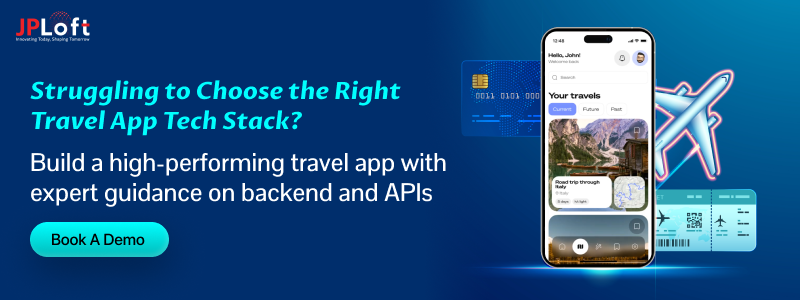
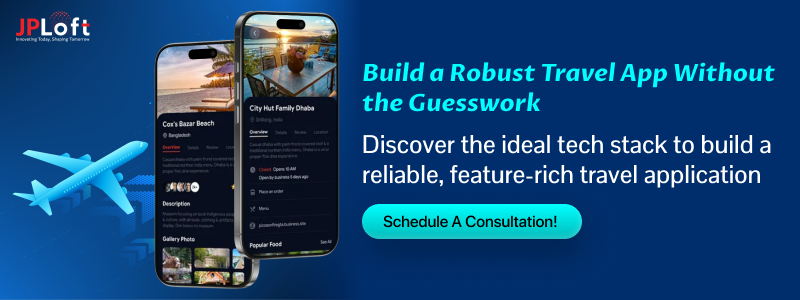

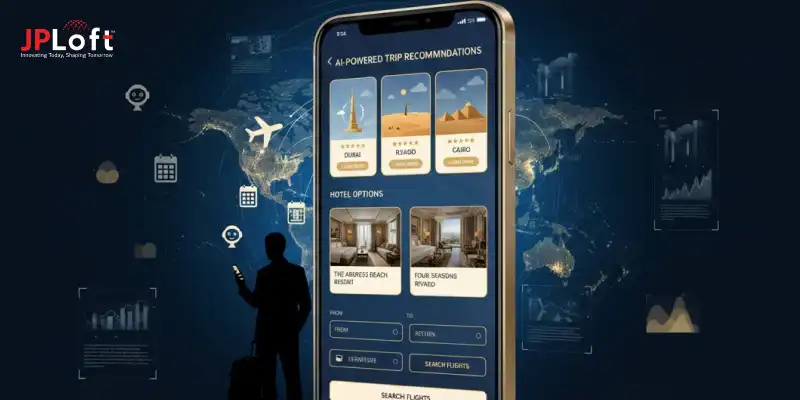
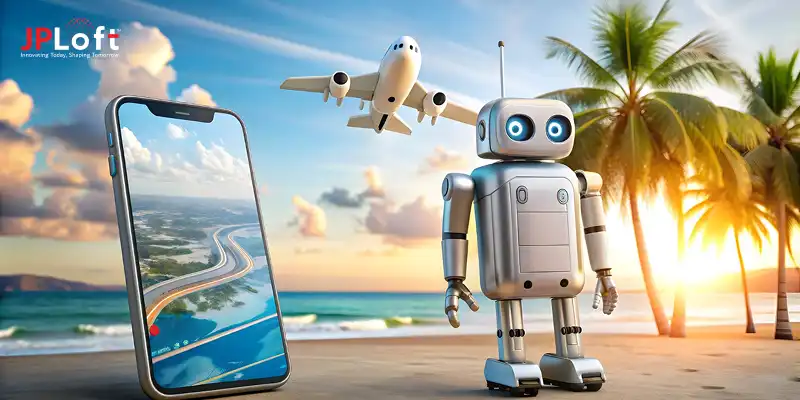
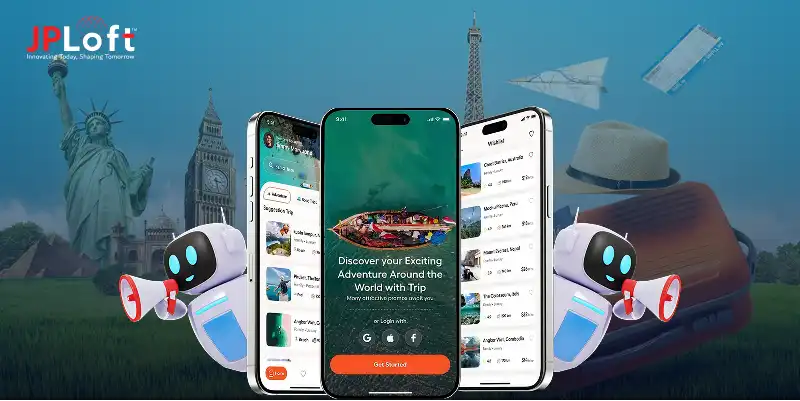


Share this blog